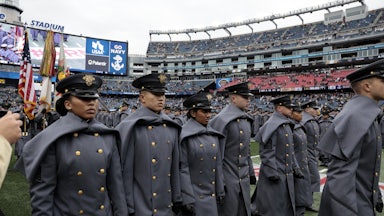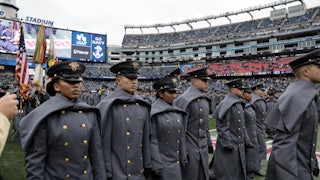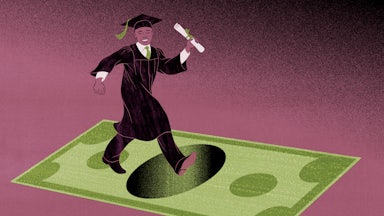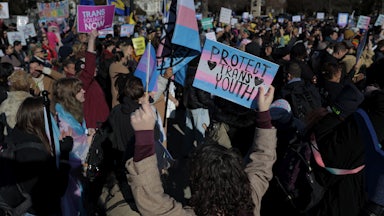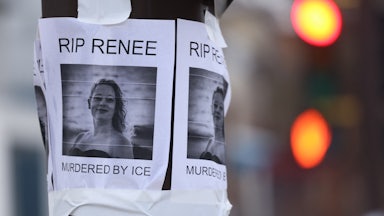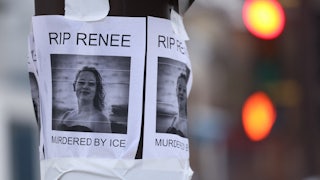The whitest thing you can be, occupationally, in America, is an agricultural manager. That isn’t a stereotype. It’s a statistical fact, according to the latest labor force statistics, covering the year 2023, from the Census Bureau’s Current Population Survey, which The Wall Street Journal last week rendered in a series of graphs.
Slightly more than 96 percent of agricultural managers, a category that includes farmers and ranchers, are Caucasian. The median annual pay for agricultural managers was $75,760 in 2022, the last year for which data are available in the Bureau of Labor Statistics’ Occupational Handbook.
The Blackest thing you can be is a Postal Service mail sorter, processor, or processing machine operator. A little more than 48 percent of all mail sorters, processors, and processing machine operators are African American. The median annual pay for this job category as of 2022 was $49,130.
The most Asian thing you can be is a manicurist and pedicurist (65 percent, $31,130), and the most Latino thing you can be is an installer of drywall or ceiling tiles (74 percent, $51,160). The most male thing you can be is a construction equipment operator (99 percent, $51,050). The most female thing you can be is a skincare specialist (99 percent, $38,060).
It’s important to keep in mind that these are snapshots of occupations, not of races or genders. To say, for instance, that nearly half of all Postal Service mail sorters are Black is not to say that nearly half of all African Americans are Postal Service mail sorters. But the clustering within individual occupations of certain races or genders is a useful social index of how certain jobs—some more desirable than others; some less so—get distributed. It tells us something meaningful about what, for lack of a better term, I’ll call occupational ghettoization one year after the Supreme Court eliminated affirmative action in college admissions.
Overrepresentation is more pronounced according to gender than according to race. Men represent 53 percent of the workforce overall but 99 percent of all construction equipment operators. The five “most male” occupations are all at least 98 percent male (construction equipment operators; pipelayers; brickmasons, blockmasons, and stonemasons; bus and truck mechanics; and logging workers). Most, but not all, of that male dominance can be attributed to a real or perceived “brawn” differential between men and women. It’s easier to justify male-female disparities in occupations believed to require greater upper-body strength than in higher-paying occupations that don’t, such as chief executive (69 percent male) and surgeon (80 percent male).
No such reassurance can be derived from the five most “female” occupations, all of which are at least 94 percent female even though women represent only 46.9 percent of the workforce: skincare specialist; preschool or kindergarten teacher; legal secretary and administrative assistant; dental hygienist; and speech-language pathologist. Any of these jobs could be performed by a man, and one of them, administrative assistant—a contemporary euphemism for “secretary”—once was performed primarily by men. During the nineteenth century the job of secretary was considered an apprentice position ideally suited to young men looking to rise up in the world. In the 1920s, when secretarial jobs started getting assigned to women, being a secretary instantly ceased to be a stepping stone to anything. A whisker below the top five most “female” occupations, you’ll find childcare workers, 93.8 percent of whom are women. That pays (per BLS’s 2022 median) $28,520.
Among the five “most female” occupations there is also evidence of a countertrend that has attracted some attention in recent years: male occupational dysfunction, expressed most concretely in males falling behind women in education levels. Fifty-three percent of women have completed a bachelor’s degree or more, compared to 47 percent of men. None of the most predominantly male occupations require a bachelor’s degree or more, but three of the most predominantly female occupations do, and two of these (dental hygienist and speech-language pathologist) outearn the five most male occupations, with median 2022 wages of $84,000 and $81,400, respectively.
Moving on to race, we see levels of occupational ghettoization that are all over the map: large for Asian and Latino workers, moderate for African Americans, and smallest for whites versus all persons of color.
The clustering of Asians in the low-paying job of manicurist and pedicurist represents the largest ethnic overrepresentation demonstrated in the Current Population Survey. Asians represent about 7 percent of the workforce but, as noted, almost 65 percent of all manicurists and pedicurists. The next four occupations where Asians are most overrepresented, however, are all high-paying jobs. In none of these do Asians represent a majority (contrary to popular stereotype); rather, they account for about 30 to 40 percent of all workers in these occupations. The occupations are: medical scientist ($99,930), software developer, ($127,260) nonmedical scientist ($108,000), and computer hardware engineer ($132,360).
Latinos, the other ethnic group with large occupational ghettoization, are much more uniform in their clustering. Latinos constitute about 19 percent of the workforce but the majority (ranging from 52 to 74 percent) of workers in the occupations they dominate. These occupations all involve manual work performed in houses and commercial buildings, and none of these positions pay more than $48,000 (going, again, by BLS’s 2022 median). These jobs are: installer of drywall or ceiling tiles; roofer; carpet, floor, or tile installer or finisher; painter or paperhanger; and housekeeper. Housekeepers are the lowest-paid, with a 2022 median of about $30,000; not coincidentally, this is the only one of the five jobs where women predominate.
African Americans represent about 13 percent of the workforce and about 35 to 48 percent of the occupations where they’re ghettoized. Notably, there are no longer any jobs that are so “Black” that Blacks represent the majority, as they once did in low-paying jobs such as housekeeper, Pullman porter (an occupation that no longer exists), or sharecropper (ditto). That’s the good news. The bad news is that the jobs where Blacks do cluster (albeit to a lesser extent) are still mostly lower-wage positions: Postal Service mail sorter and processor (as noted, $49,130); nursing assistant ($35,760); security guard ($34,750); Postal Service clerk ($56,200); and probation officer ($59,860). Only this last meets or exceeds the median weekly wage for all workers (about $58,000 on an annualized basis).
White people represent about 77 percent of the workforce, limiting the degree to which they can be overrepresented within any given occupation. But the BLS gives it—well, I was going to say “the old college try,” but according to the statistics you typically don’t need more than a high school degree to be, say, John Dutton, the rancher Kevin Costner plays on Yellowstone. (A faulty example, perhaps, because Dutton clearly makes a lot more than the median $75,760 for agricultural managers.) The whitest occupations overrepresent whites by fewer than 20 percentage points simply because white workers are hard to avoid. But these whitest occupations are all about 95 to 96 percent white, which no matter how you cut it is occupational ghettoization.
The five whitest jobs are not necessarily more highly paid than the five Blackest or most Latino jobs. Granted, cost estimators (office workers who calculate, according to the BLS, “the time, money, materials, and labor required to make a product or provide a service”), earn a median $71,200, just a bit below John Dutton and his fellow agricultural managers. (Unlike agricultural managers, cost estimators generally must have a college degree.) But neither of the next two whitest occupations pays much: miscellaneous construction and related worker ($44,890) and surveying and mapping technician ($47,180). The fifth-whitest job is property appraiser and assessor. It pays a median $61,560 and, like cost estimator, requires a college degree.
We can take some comfort in the fact that, with the possible exception of property appraiser and assessor, none of the five whitest occupations lies within what’s sometimes called the professional-managerial class (and more commonly called simply “the professions”). But the evidence does show, unsurprisingly, that the professions remain disproportionately white. Lawyers and chief executives are both about 86 percent white. Architects are 84 percent white, school psychologists are 91 percent white, and other psychologists are 86 percent white.
Examining racial and gender over- and underrepresentation within occupations is only one way to measure racial and gender inequality, which in turn is only one way to measure inequality more broadly. Still, it seems worth noting that, except for Latinos, we can record progress here and there away from occupational ghettoization. It’s also worth noting that, despite the Supreme Court having ruled against affirmative action, occupational ghettoization still exists, at the high end and the low. What’s changed is that we’ve lost perhaps the most effective tool to address it.



